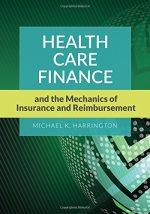Question
Using the relevant M&A Disaster article (http://www.investopedia.com/articles/financial-theory/08/merger-acquisition-disasters.asp), a) Which M&A transaction had the lowest IRR (not loss on investment)? b) What was the approximate IRR
Using the relevant M&A Disaster article (http://www.investopedia.com/articles/financial-theory/08/merger-acquisition-disasters.asp),
a) Which M&A transaction had the lowest IRR (not loss on investment)?
b) What was the approximate IRR (you can just use month and year)
Sprint/Nextel (from initial purchase price to remaining value after $30B write-off in 2008)
Here is the artcle:
Sprint and Nextel Communications
In August 2005, Sprint acquired a majority stake in Nextel Communications in a $35 billion stock purchase. The two combined to become the third largest telecommunications provider, behind AT&T (NYSE:T) and Verizon (NYSE:VZ). Prior to the merger, Sprint catered to the traditional consumer market, providing long-distance and local phone connections and wireless offerings. Nextel had a strong following from businesses, infrastructure employees and the transportation and logistics markets, primarily due to the press-and-talk features of its phones. By gaining access to each other's customer bases, both companies hoped to grow by cross-selling their product and service offerings. (Read about the ideal outcome of a M&A deal in What Makes An M&A Deal Work?)
Soon after the merger, multitudes of Nextel executives and mid-level managers left the company, citing cultural differences and incompatibility. Sprint was bureaucratic; Nextel was more entrepreneurial. Nextel was attuned to customer concerns; Sprint had a horrendous reputation in customer service, experiencing the highest churn rate in the industry. In such a commoditizedbusiness, the company did not deliver on this critical success factor and lost market share. Further, a macroeconomic downturn led customers to expect more from their dollars.
Cultural concerns exacerbated integration problems between the various business functions. Nextel employees often had to seek approval from Sprint's higher-ups in implementing corrective actions, and the lack of trust and rapport meant many such measures were not approved or executed properly. Early in the merger, the two companies maintained separate headquarters, making coordination more difficult between executives at both camps.
Sprint Nextel's (NYSE:S) managers and employees diverted attention and resources toward attempts at making the combination work at a time of operational and competitive challenges. Technological dynamics of the wireless and Internet connections required smooth integration between the two businesses and excellent execution amid fast change. Nextel was simply too big and too different for a successful combination with Sprint.
Sprint saw stiff competitive pressures from AT&T (which acquired Cingular), Verizon and Apple's (Nasdaq:AAPL) wildly popular iPhone. With the decline of cash from operations and with high capital-expenditure requirements, the company undertook cost-cutting measures and laid off employees. In 2008, the company wrote off an astonishing $30 billion in one-time charges due to impairment to goodwill, and its stock was given a junk status rating. With a $35 billion price tag, the merger clearly did not pay off. (Read about the implications of this label in What Is A Corporate Credit Rating?)
Read more: Biggest Merger and Acquisition Disasters | Investopedia http://www.investopedia.com/articles/financial-theory/08/merger-acquisition-disasters.asp#ixzz4EjrOCJo4 Follow us: Investopedia on Facebook
Step by Step Solution
There are 3 Steps involved in it
Step: 1

Get Instant Access to Expert-Tailored Solutions
See step-by-step solutions with expert insights and AI powered tools for academic success
Step: 2

Step: 3

Ace Your Homework with AI
Get the answers you need in no time with our AI-driven, step-by-step assistance
Get Started


